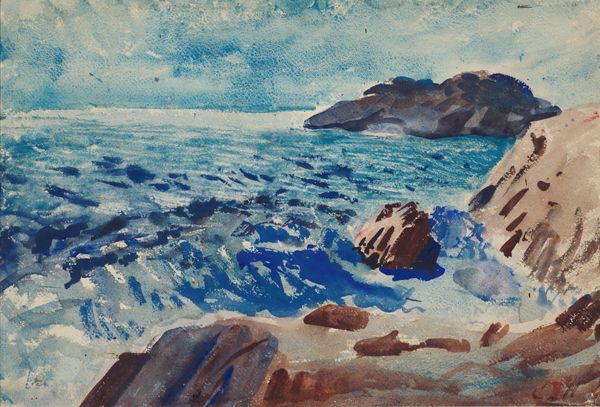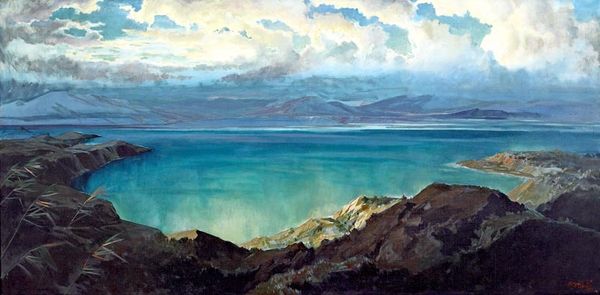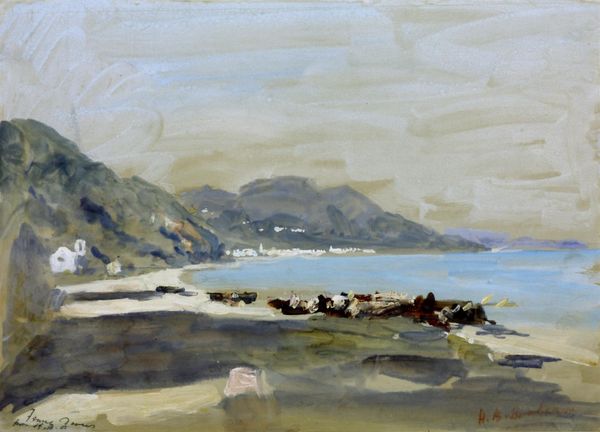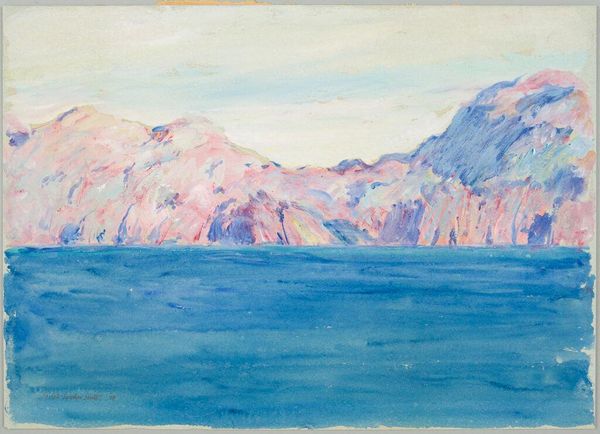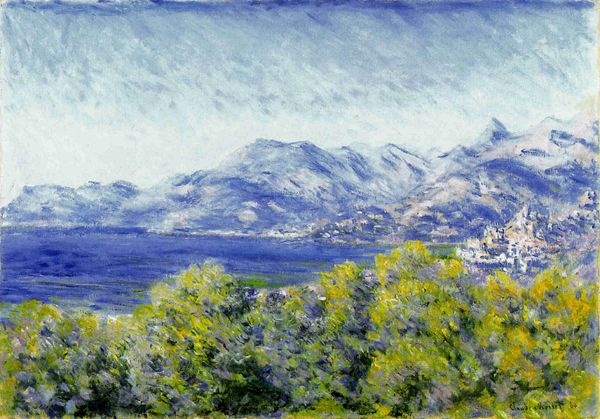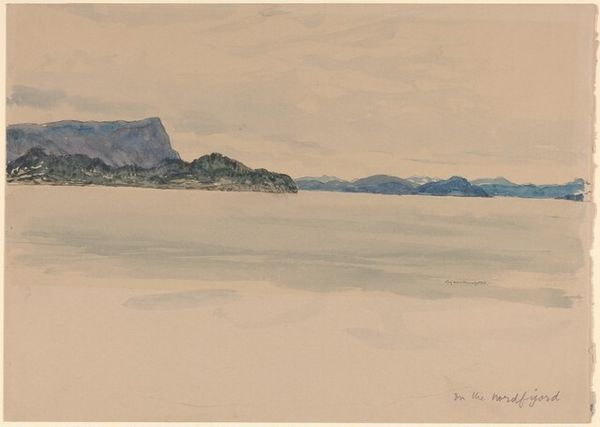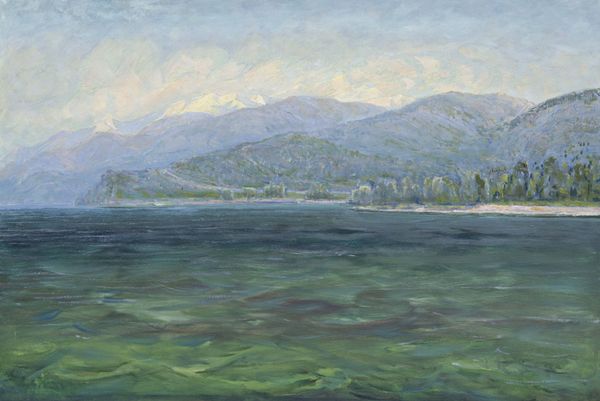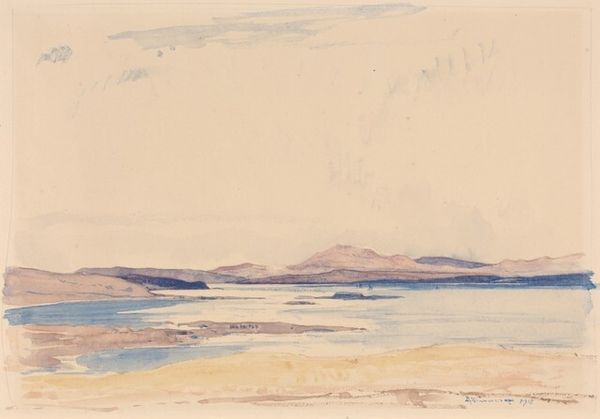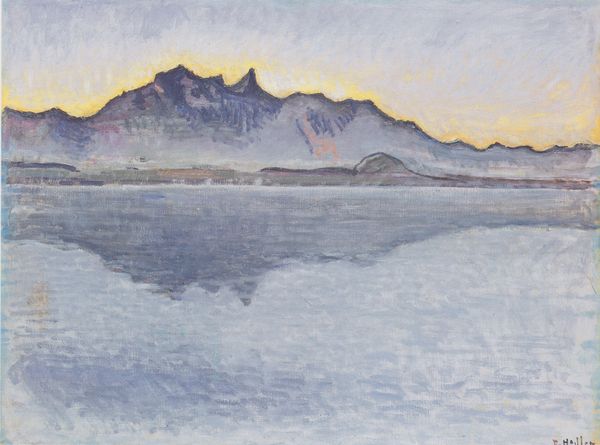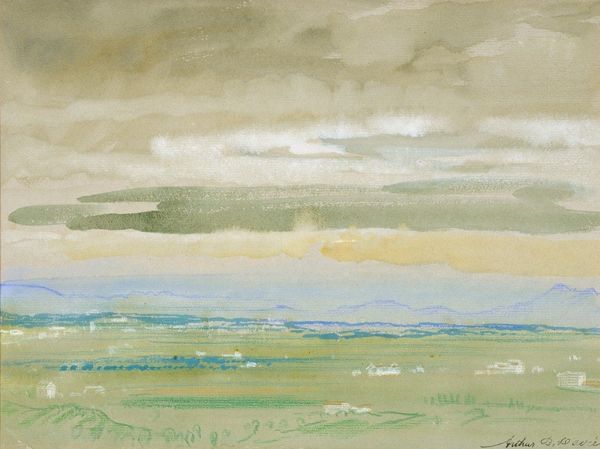
Copyright: Public domain
John Ruskin created this watercolor painting of Neuchâtel, Switzerland, during one of his many European travels. Ruskin's choice of watercolor is significant; its portability and transparency perfectly suited his project of directly capturing the natural world. Notice how the fluidity of the medium allows for a layering effect, building depth and atmosphere as the eye travels from the choppy waters to the distant, snow-capped Alps. The white of the paper shines through, especially in the clouds, granting them a luminous quality. Ruskin saw close observation as a moral imperative, a way to connect with divine truth. By depicting this scene with such care, he elevated it, suggesting that even a seemingly simple landscape could be a source of profound insight. This belief challenges the traditional hierarchy between artistic skill and intellectual understanding, emphasizing the importance of attentive making in accessing deeper meaning.
Comments
No comments
Be the first to comment and join the conversation on the ultimate creative platform.
